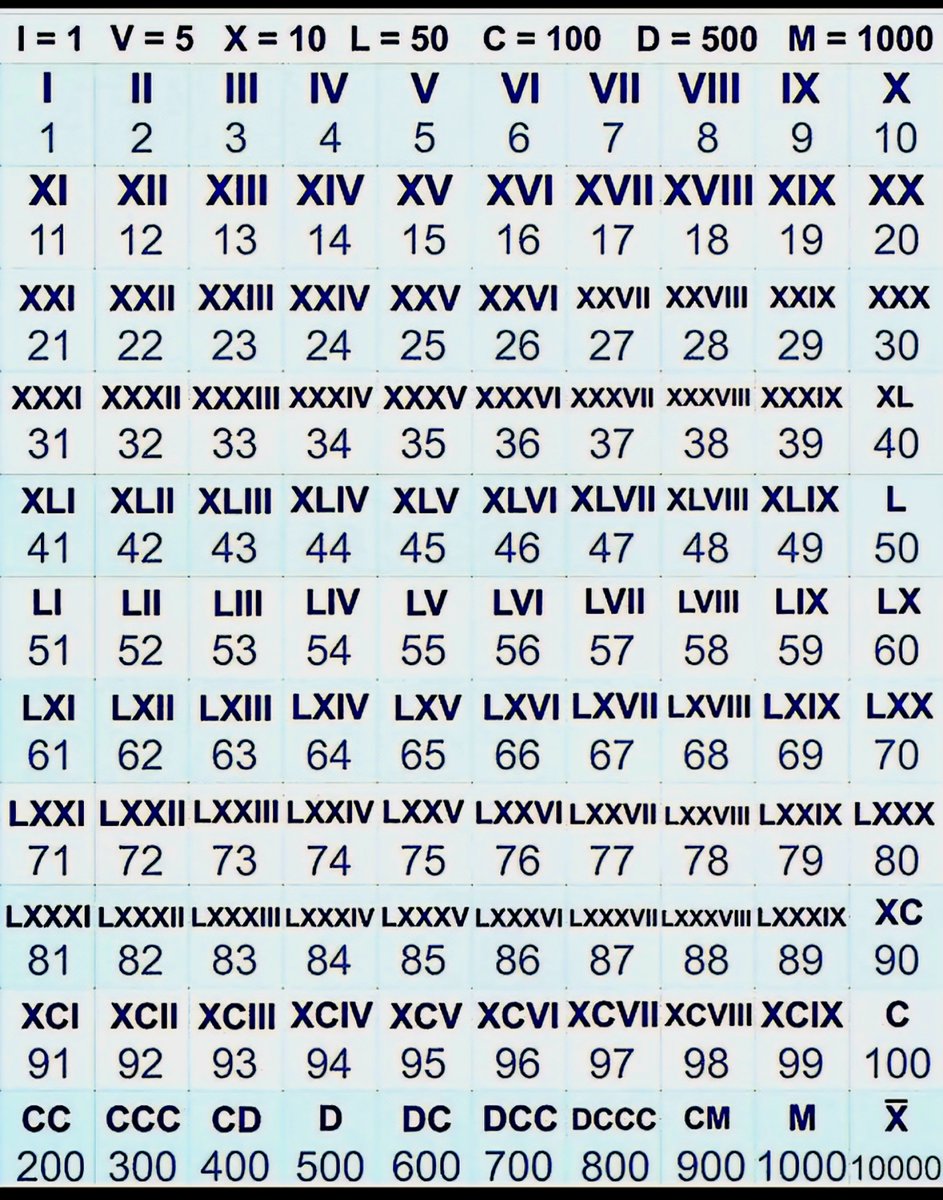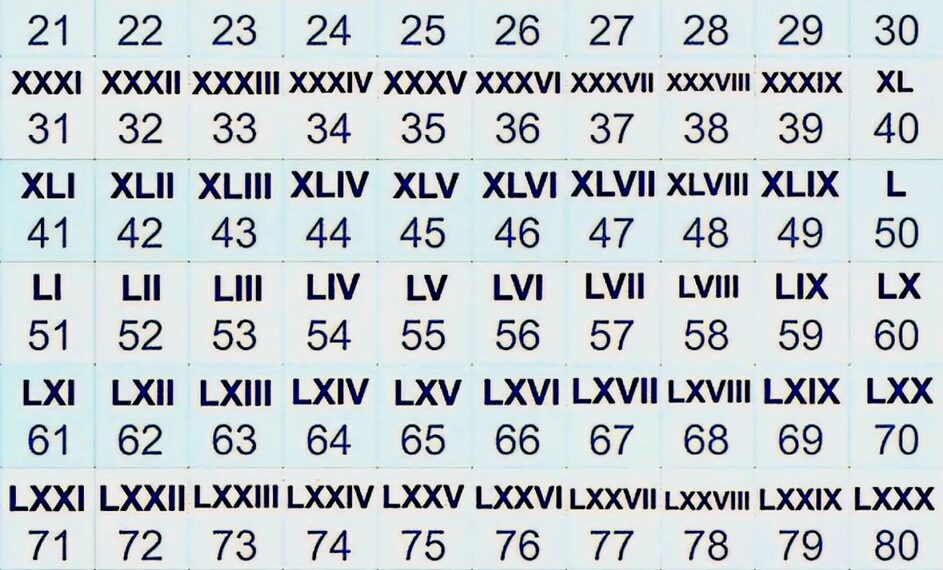Select Language:
Roman Numeral Conversion Table
1. A Valuable Reference for Historical and Modern Uses
Roman numerals, once the foundation for numbering in ancient Rome, still find their relevance today. From classic clocks to book chapters, understanding how these symbols translate to our current numbering system is essential for students, historians, and enthusiasts alike. This comprehensive table provides a quick reference to convert Roman numerals to Arabic numbers for practical and educational purposes.
2. The Core Symbols and Their Values
At the heart of Roman numerals are seven primary symbols, each representing a specific value:
- I = 1
- V = 5
- X = 10
- L = 50
- C = 100
- D = 500
- M = 1000
Knowing these core symbols helps decode more complex numerals, especially when they are combined in various arrangements to represent larger numbers.
3. Understanding the Rules of Composition
Roman numerals are composed following specific conventions:
- Repetition of symbols adds values: III = 3, XX = 20.
- Placing a smaller numeral before a larger one indicates subtraction: IV = 4, IX = 9.
- Placing a smaller numeral after a larger one indicates addition: VI = 6, LX = 60.
Understanding these rules ensures accurate interpretation of any Roman numeral encountered.
4. The Table of Common Roman Numerals
Here’s a selection of commonly used Roman numerals with their Arabic equivalents:
| Roman Numeral | Arabic Number |
| ————– | ————– |
| I | 1 |
| II | 2 |
| III | 3 |
| IV | 4 |
| V | 5 |
| VI | 6 |
| VII | 7 |
| VIII | 8 |
| IX | 9 |
| X | 10 |
| XL | 40 |
| L | 50 |
| XC | 90 |
| C | 100 |
| CD | 400 |
| D | 500 |
| CM | 900 |
| M | 1000 |
This table serves as an invaluable tool for quick reference and for understanding larger, more complex numbers.
5. Converting Larger Numbers
For numbers beyond 1000, Roman numerals combine symbols in a systematic way:
- 1984: 1000 (M) + 900 (CM) + 80 (LXXX) + 4 (IV) = MCMXXXIV
- 2025: 2000 (MM) + 20 (XX) + 5 (V) = MMXXV
By breaking down large numbers into manageable parts according to the table, complex conversions become easier and more accurate.
6. Practical Applications in Today’s World
While Roman numerals are rarely used for everyday calculations, they are crucial in specific contexts:
- Naming monarchs and popes (e.g., Queen Elizabeth II)
- Marking years in film and book editions (e.g., “Episode IX”)
- Creating clock faces, especially in classic and vintage designs
- Denoting significant events in sporting wins or anniversaries
Having this conversion table in hand allows professionals, students, and enthusiasts to interpret these uses correctly.
7. Tips for Mastering Roman Numeral Conversion
- Memorize the basic symbols and their values.
- Practice converting small numbers regularly.
- When dealing with larger numbers, decompose them into hundreds, tens, and units.
- Use the rules of subtraction and addition intelligently to interpret or generate Roman numerals.
- Keep the conversion table accessible for quick reference during study or work.
Image:

8. Why It Matters in the Modern Age
Despite advanced calculators and digital tools, understanding Roman numerals fosters a deeper appreciation of historical contexts and classical literature. It sharpens analytical skills and connects us to a time when numbers were inscribed on monuments and manuscripts, echoing an enduring legacy in contemporary times.
By familiarizing yourself with this Roman numeral conversion table, you not only enhance your mathematical literacy but also gain a better understanding of historical and cultural references that continue to influence our daily lives in 2025.






